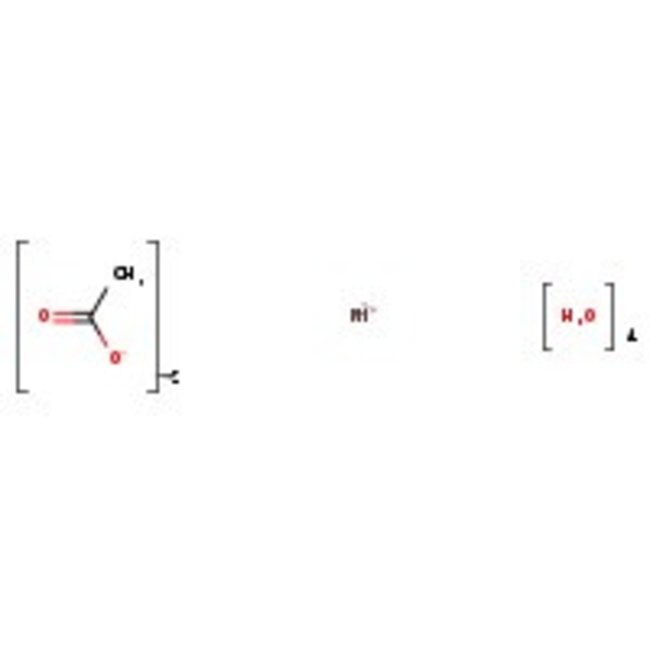Search Thermo Fisher Scientific
Nickel(II) acetate tetrahydrate, 98+%, Thermo Scientific Chemicals



Nickel(II) acetate tetrahydrate, 98+%, Thermo Scientific Chemicals
Chemical Identifiers
Specifications
Description
This Thermo Scientific Chemicals brand product was originally part of the Alfa Aesar product portfolio. Some documentation and label information may refer to the legacy brand. The original Alfa Aesar product / item code or SKU reference has not changed as a part of the brand transition to Thermo Scientific Chemicals.
Nickel(II) acetate tetrahydrate is used in electroplating. It is also used in the preparation of polynuclear-nickel polyoxotungstate cluster compounds, which are used in designing molecular magnets. Further, it is used as a catalyst and mordant for dyeing textiles, as a sealant for anodized aluminum and to make other nickel compounds.
Solubility
Soluble in water and methanol. Insoluble in diethyl ether and n-octanol.
Notes
Hygroscopic. Incompatible with oxidizing agents, strong acids and strong bases.
Figures
Documents & Downloads
Certificates
Frequently asked questions (FAQs)
Citations & References
Safety and Handling
Classification of the substance or mixture
CLP classification - Regulation(EC) No 1272/2008
Label Elements
Signal Word
Danger
Hazard Statements
H302 + H332 - Harmful if swallowed or if inhaled
H317 - May cause an allergic skin reaction
H334 - May cause allergy or asthma symptoms or breathing difficulties if inhaled
H341 - Suspected of causing genetic defects
H350i - May cause cancer by inhalation
H360D - May damage the unborn child
H372 - Causes damage to organs through prolonged or repeated exposure
H410 - Very toxic to aquatic life with long lasting effects
Precautionary Statements
P261 - Avoid breathing dust/fume/gas/mist/vapors/spray
P273 - Avoid release to the environment
P280 - Wear protective gloves/protective clothing/eye protection/face protection
P302 + P352 - IF ON SKIN: Wash with plenty of soap and water
P304 + P340 - IF INHALED: Remove person to fresh air and keep comfortable for breathing
P312 - Call a POISON CENTER or doctor if you feel unwell
Additional EU labelling
Restricted to professional users